Do you want to know how many backlinks your competitors have, want to find your backlinks to your web pages, and learn how to find backlinks to a page and website whether it is yours or not?
In this article, you are going to learn how to find backlinks and backlinks opportunities in a step-by-step process using SE Ranking.
Step #1: Open SE Ranking Backlink Checker
Tools like SE Ranking Backlink Checker give you all the information about the analyzed website backlink profile and they are largely used for link building campaigns, backlink audits, and other parts of off-page SEO.

And there are many different Backlink Checker tools you can use to find backlinks to a page and website and if you are already using some SEO tools, then you can still follow me as the steps are the same, just the tool names and interface differ.
However, if you are not using any SEO tool, then I can definitely recommend you try SE Ranking as they offer over 30 tools for every task in search marketing. They also offer the best value for money starting as little as $19/month making it the most affordable yet complete SEO tool.
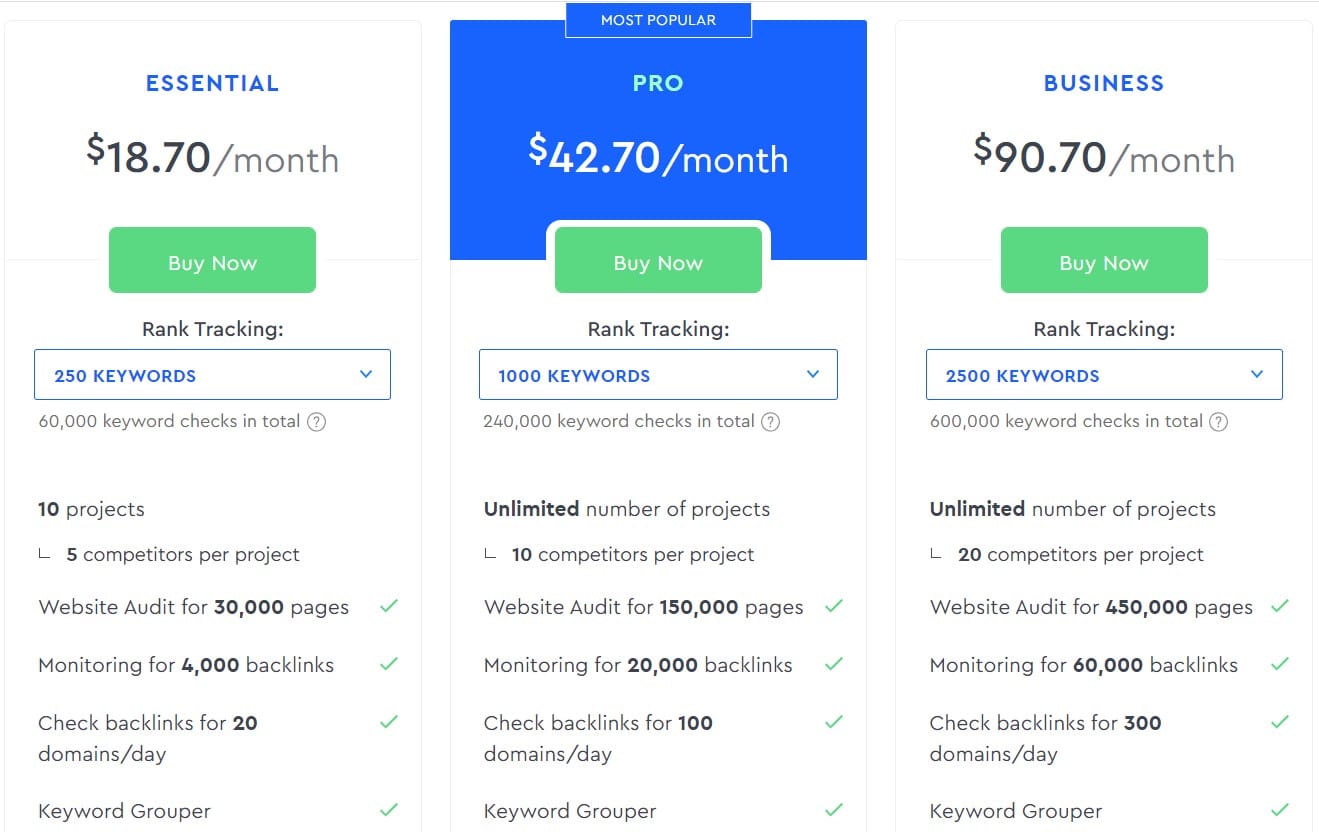
Step #2: Enter Domain You Want
The second step for how to find backlinks to a page and website is to enter the domain into the SE Ranking Backlink Checker tool.
So, once you are having open SE Ranking Backlink Checker tool, then you want to enter the domain you want to analyze. For this example, I’ll use my website.
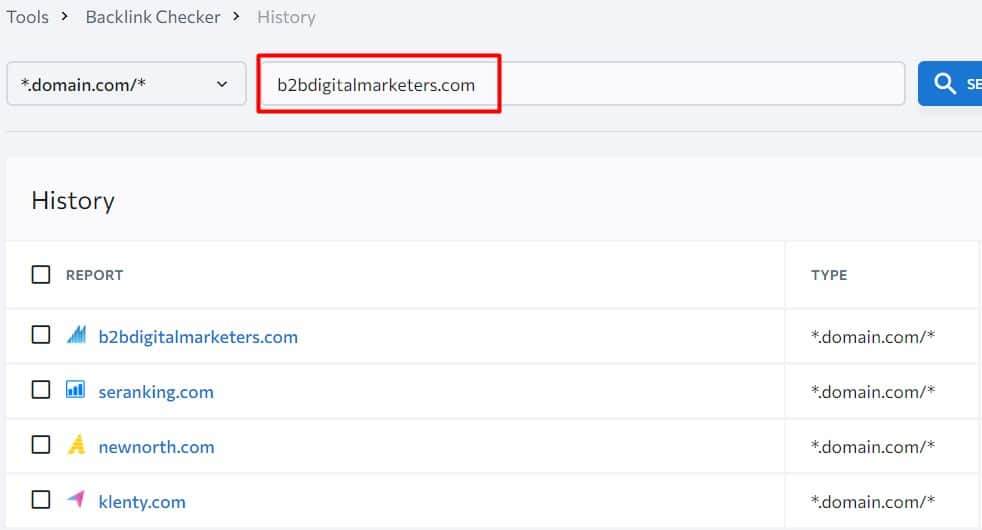
However, if you want to only analyze a certain webpage and not the entire domain, then you will want to change the setting from “domain” to “URL”. Like this, you will get only backlinks for the webpage and not the entire domain.

Or if you want to find backlinks to a certain subdomain, for example only for blog.hubspot.com, then you will change the settings to the report “domain without subdomains”, as this will limit only to the domain and subdomain you select.

So, based on this you select the right setting, let’s say I want to find backlinks to my entire website. So, I enter the domain and click on search.

Step #3: Select Appropriate Report
The next step of how to find backlinks to a website is to select an appropriate report based on your objectives.
So, once the SE Ranking Backlink Checker finishes and loads the information, you will get a high-level overview of the analyzed website or web page’s backlink profile.

Here you can see the number of backlinks, referring domains, and the links pointing to the homepage or other pages as well as the dofollow/nofollow ratio and how many edu and gov links the page or website has.
Also, you can see the domain trust which is the estimated number of website authority, and page trust which is the estimated number of page authority. Obviously the higher the better.
Then you can see graphs of total referring domains and backlinks over the selected period.
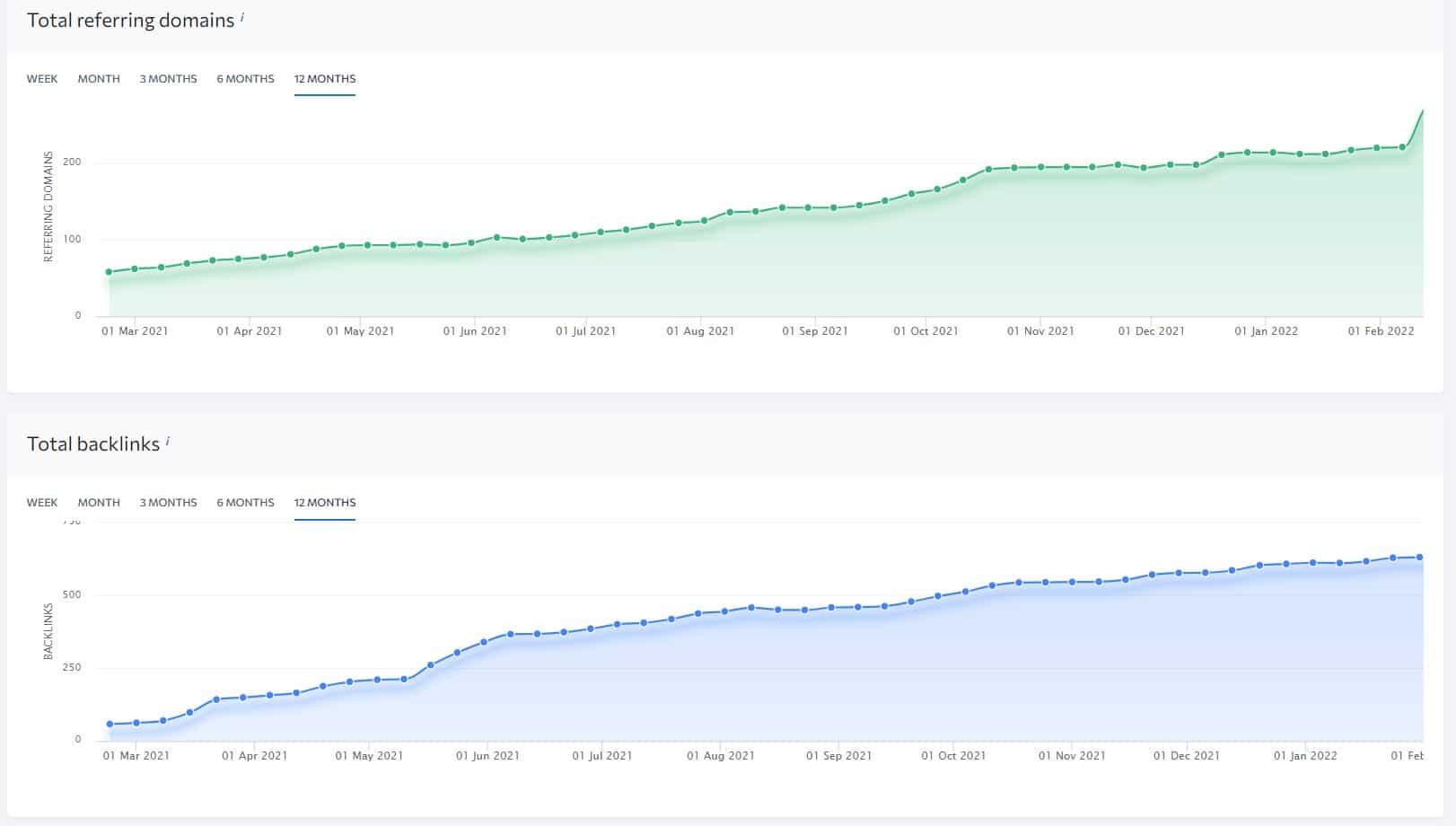
After that, you can see the graphs of new & lost referring domains and new & lost backlinks over the selected period.

Then you can see the top referring domains anchors and top backlink anchors for the analyzed website or page.

And lastly, you can see the distribution map of CCTLDS and countries.

And in the sidebar, you have different reports that will provide you with more details. Of course which reports you’ll need depends on the objective of why you want to know how to find backlinks to a website or page.

So, let’s go through the reports and explain each of them how they can be used.
However, if you want to be really successful with link building and off-page SEO, then being creative is the key to success. Figuring out how to use these reports in different and unique ways will give you an advantage over others and extra useful information to compete in your niche.
So, don’t worry to think outside the box. I am just going to give you examples to better understand the reports.
Referring Domains Report
The first report in SE Ranking Backlink Checker is the referring domain report.

Here you can find all the referring domains that link out to the analyzed domain/URL with additional helpful information such as when was the first backlink first seen, how many of the backlinks are pointing from the URL/Domain, and what’s the Domain Trust.
You can also expand the backlinks to get more information about the backlinks from the referring domains such as the anchor text, page trust, target URL, and the URL where is the backlink.

Then, for example, you can use filters to quickly find any specific referring domains such as you want to see only referring domains from a certain country or with a certain domain trust.
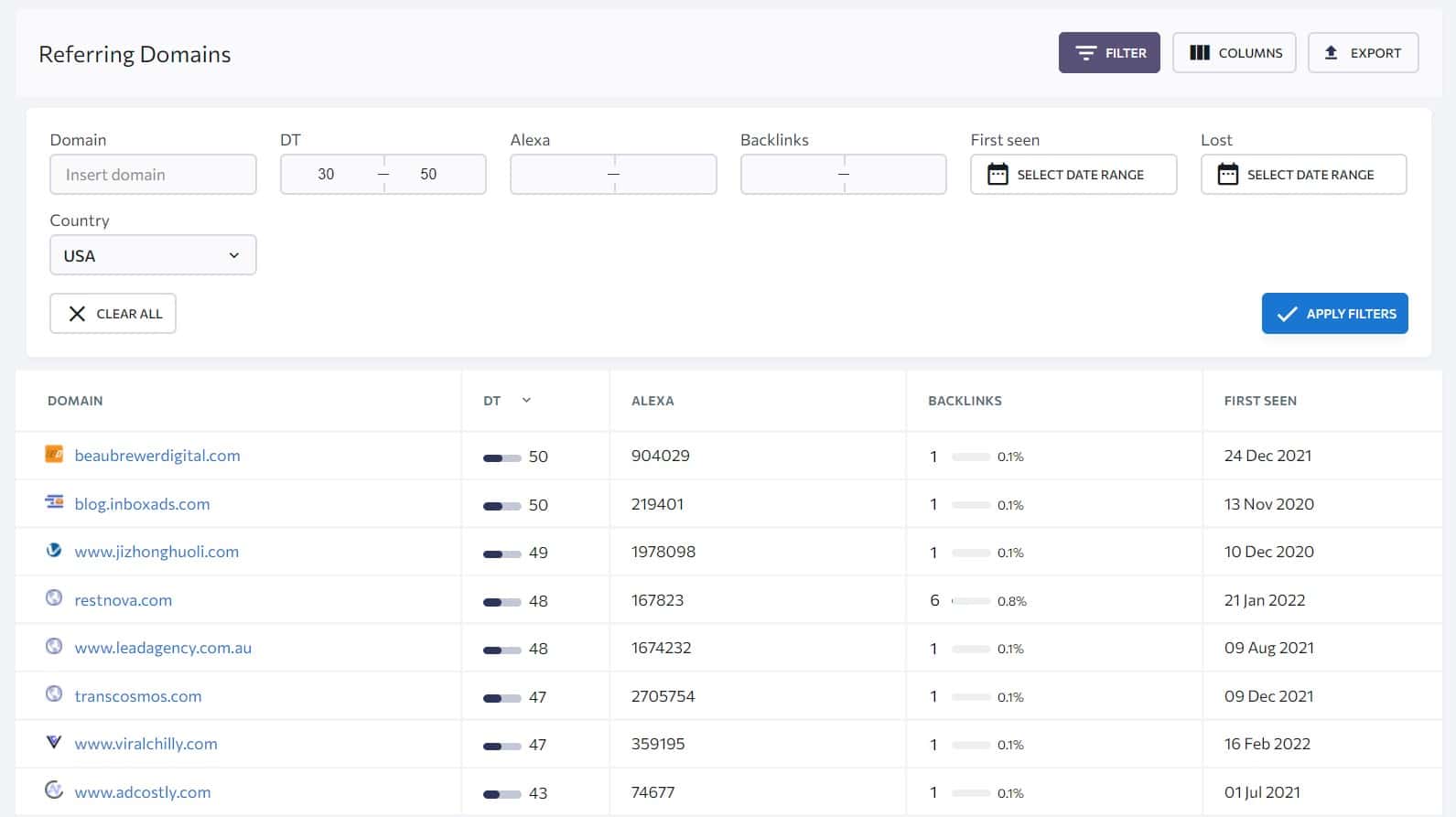
This is definitely one way how to find backlinks to a webpage or website and often you can find yourself using this report to find prospects for guest blogging or blogger outreach.
Also, this report is a great way to start with competitor backlink analysis to get the feel of your industry and from where your competitors are getting their links.
Backlinks Report
The second report shows what you are probably looking for: the backlinks pointing to the analyzed website or web page. So, if you want to know how to find backlinks, then this is the report.

Here you can find the overview of the backlinks as well as a detailed table of all backlinks pointing to the analyzed website with additional helpful information such as the domain and page trust of the linking site, the anchor text, the target URL, type of backlink and more.
You can also customize the columns of the table with only the information you want to see, and you can set different filters to quickly find the specific backlinks you want.

This is the perfect report to find backlinks to a webpage or website and probably you will use this report the most when you are searching for backlinks or preparing link building campaign.
Anchor Text Report
Another important report in SE Ranking Backlink Checker is the Anchor Text report. Not so much about how to find backlinks but about how to find anchor texts to a page or website.

This report shows you all your anchor texts from your referring domains and backlinks, the dofollow and nofollow ratio of the anchor text, and when it was first and last seen.
Then you can expand the report to see the referring domains with the anchor text,

Or likewise to see the backlink with the anchor text.
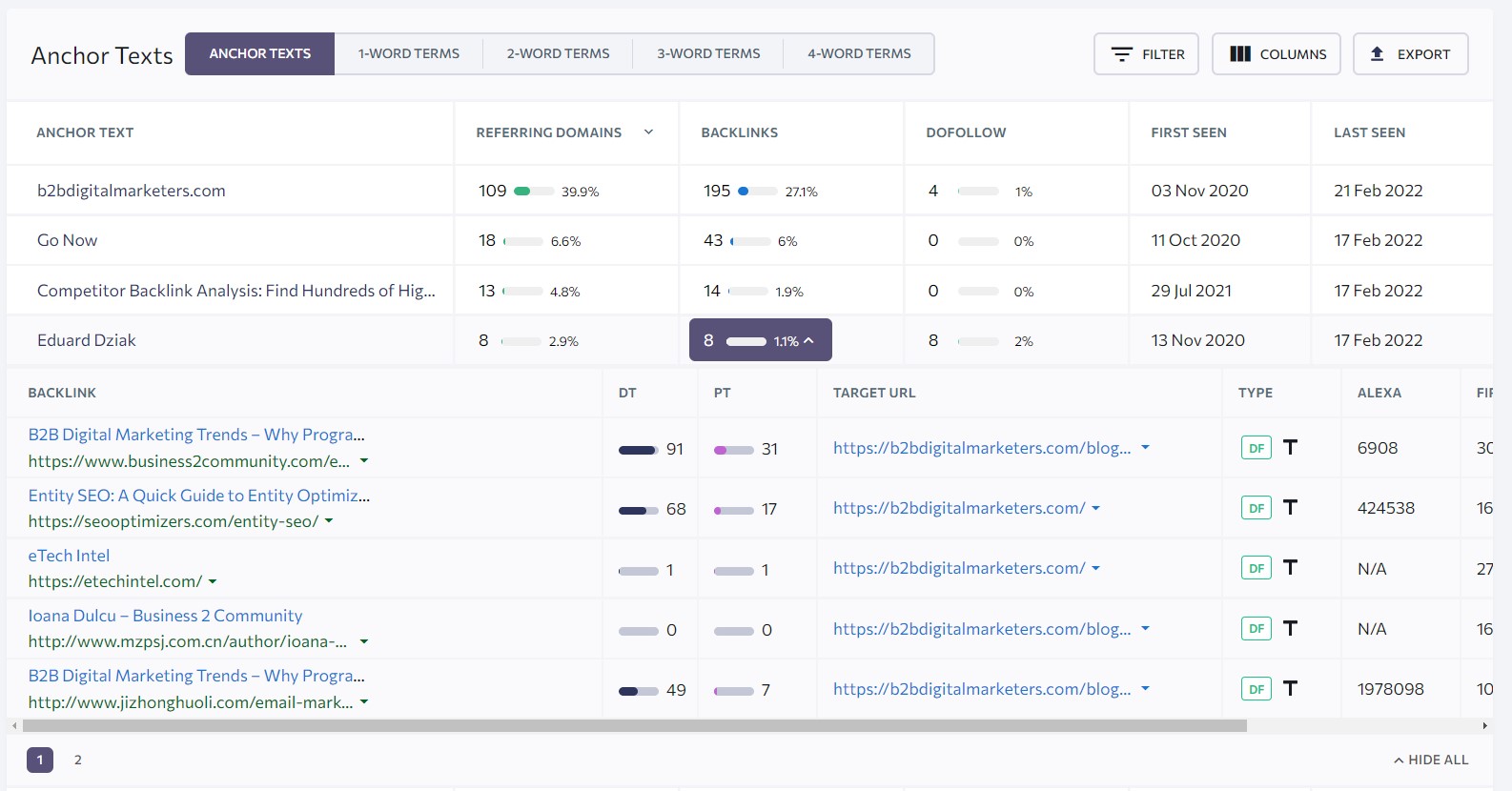
Now, this report is extremely important, especially when you are analyzing your backlink profile. Because if you are planning your link building campaign, you want to see how your anchor text is optimized.
You definitely want to avoid over-optimized anchor text as that could lead to Google devaluating your backlinks or worse manual penalty.

For example, over-optimized anchor text like this page has, would definitely pose a thread being picked by Google, unless you are a big site like PCGamer. Those have some obvious benefits…

You want to ensure you follow the save anchor text ratio when you are doing link building, here you can see an example of my recommended anchor text ratio:

Pages Report
And the last report in SE Ranking Backlink Checker is the Pages report where you can find the best pages by backlinks and referring domains.

And then you can again expand the list of backlinks and referring domains of a certain URL.

This is an excellent report if you want to find the domain’s best URLs by backlinks and referring domains. For example, you can use this report when you are doing the Skyscraper Technique, citation building, or want to get ideas on how others are building backlinks to similar content of yours.
Step #4: Find Close Competitors & Their Backlinks
Now when you know how to find backlinks to any website and page, then you should also know how to find your close competitors in order to understand how they are building backlinks to their website and what link building strategies work the best in your industry.
As such information should formulate your link building plan.
So, there are several ways how you can find your close competitor. However, because we are already using SE Ranking in this article, let me show you how you can use SE Ranking to find your close competitors:
If you are already having an established website, ranking for hundreds or thousands of keywords, then using your own website to find close competitors is the best way.
So, to do that:
Step #1: Open SE Ranking Competitive Research Tool: Here enter your domain, select your target location and click on “Analyze”.

Here you will get a high-level overview of the analyzed domain such as the number of organic keywords, organic traffic, domain trust, page trust, and the number of referring domains and backlinks.

And when you scroll down you can get even more information. However, what I am looking for is the section with “Organic competitors” and click on “View details report”.

And here you will find hundreds of your close competitors based on your ranking keywords. Of course, the more organic keywords your website is ranking for the more accurate the report is.

So now, you can start doing competitor backlink analysis to understand how your close competitors are getting backlinks.
I recommend you start with domains with similar domain trust or even lower as the off-page SEO and link building strategies to increase website authority will be similar compared to established high authoritative domains.
Also, you can what I like to do is to find competitors with half of my website authority but generate high organic traffic to see what keywords they are targeting, that bring them organic traffic.
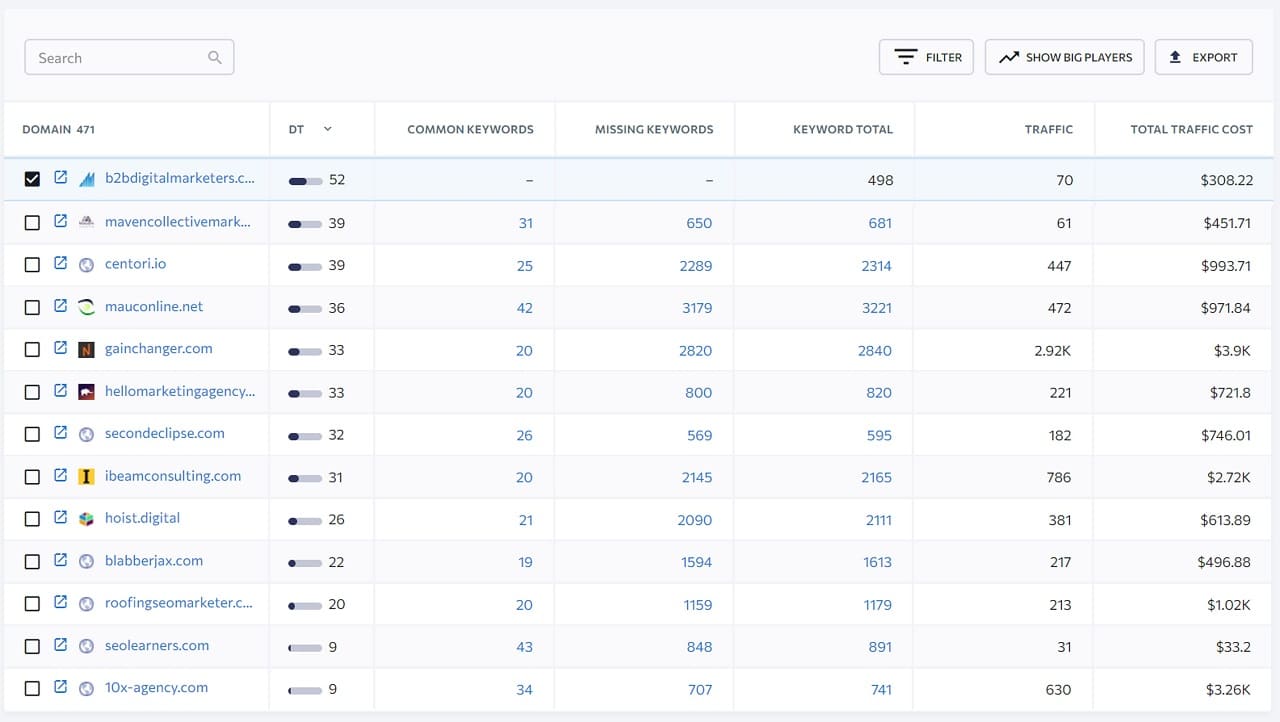
Because like this, if they can rank high for such keywords and drive organic traffic, then I should be able to outrank them with minimal effort. This was just a quick tip using this report.
Step #5: Decide Link Building Strategy
Once you have scanned your competitors and finished the competitor backlink analysis, you should have a better idea of what link building strategies are working in your niche and industry.
Based on this you will formulate your link building plan and decide what link building strategies you will want to implement.
However, even if you didn’t do the competitor backlink analysis Here is a list of several of link building strategies to get you started that are beginner-friendly:
- Guest Posting
- Resource Link Building
- Skyscraper Technique
- Link Insertion
- Broken Link Building
- HARO Link Building
- Image Link Building
- Infographic Link Building
- Tiered Link Building
Bear in mind that each of these strategies will be performed differently and will need a different skill set to successfully implement them. However, they are all great for beginners as an introduction to starting with link building.
You can watch my playlist on link building strategies and how to successfully execute them.
Step #6: How to Find Backlinks Opportunities
Alright, once you decided on the link building strategy, then you will want to start searching for link building opportunities.
So, let me show you how you can use SE Ranking to find backlinks opportunities.
For example, let’s say you are a marketing agency and you have selected resource link building strategy as one of the link building strategies you want to implement.
Step #1: Find Your Competitor: Let’s start from the beginning and find close competitors to find resource link building opportunities. So, I go to SE Ranking Competitor Research tool, enter my domain and select my target location.
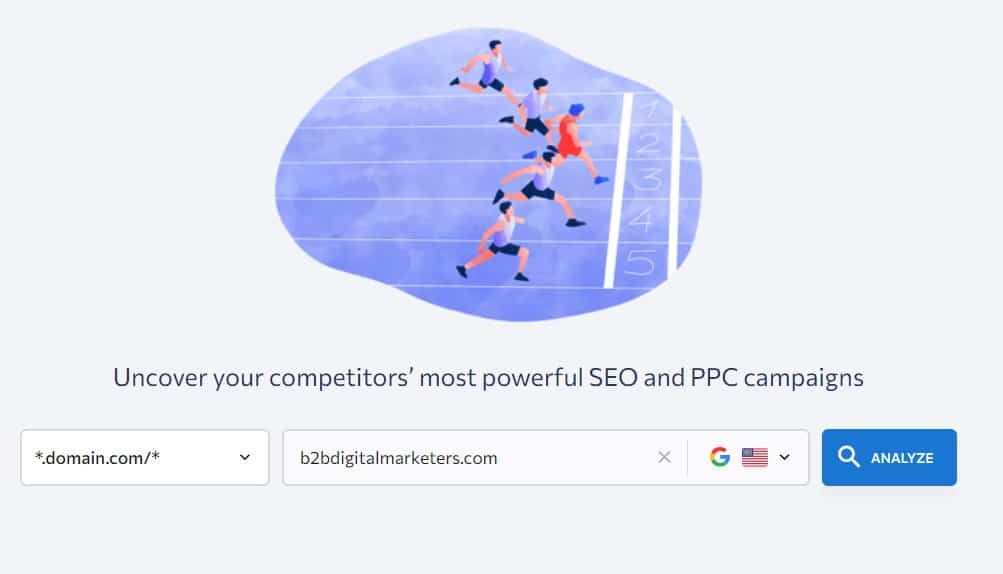
Step #2: Select your competitor: Then I go to the “Competitors” report and find similar or slightly less authoritative domains or domains with smaller DT. This one could do. So, I click on the domain.
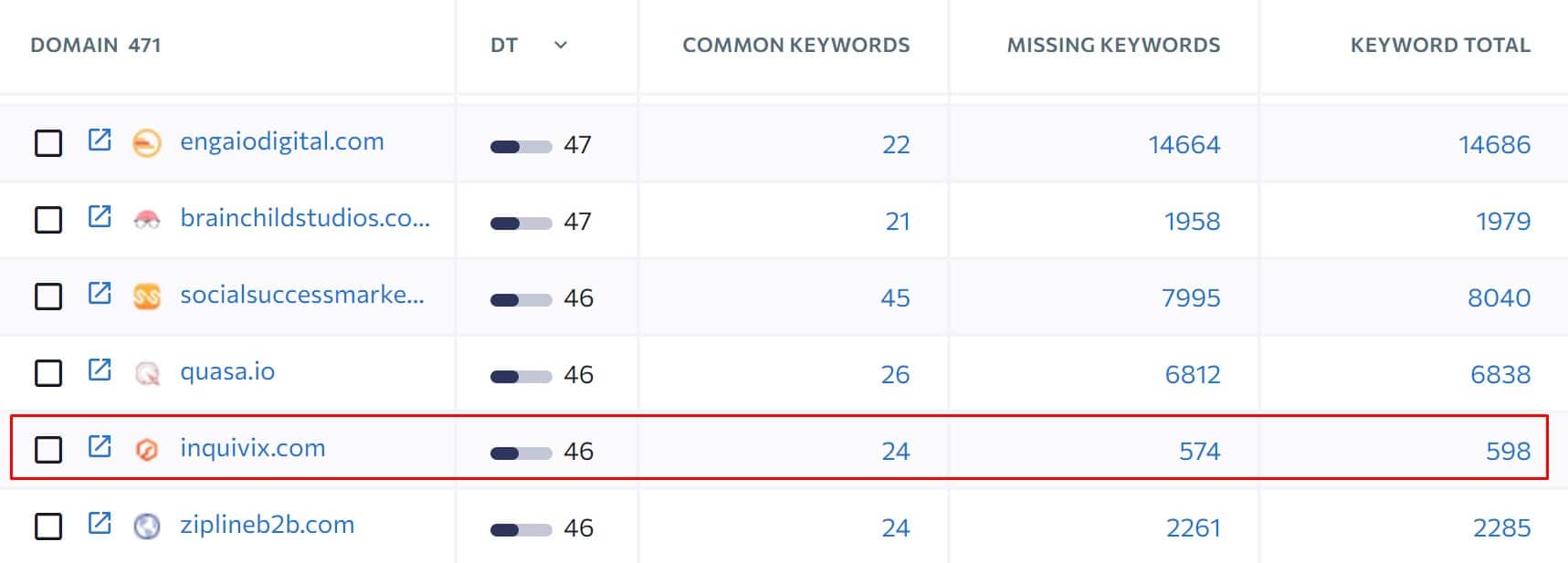
Step #3: Analyze their Backlinks: So, I click on the domain, and it opens the Competitor Research report for this domain and I click on the number of backlinks or referring domains.
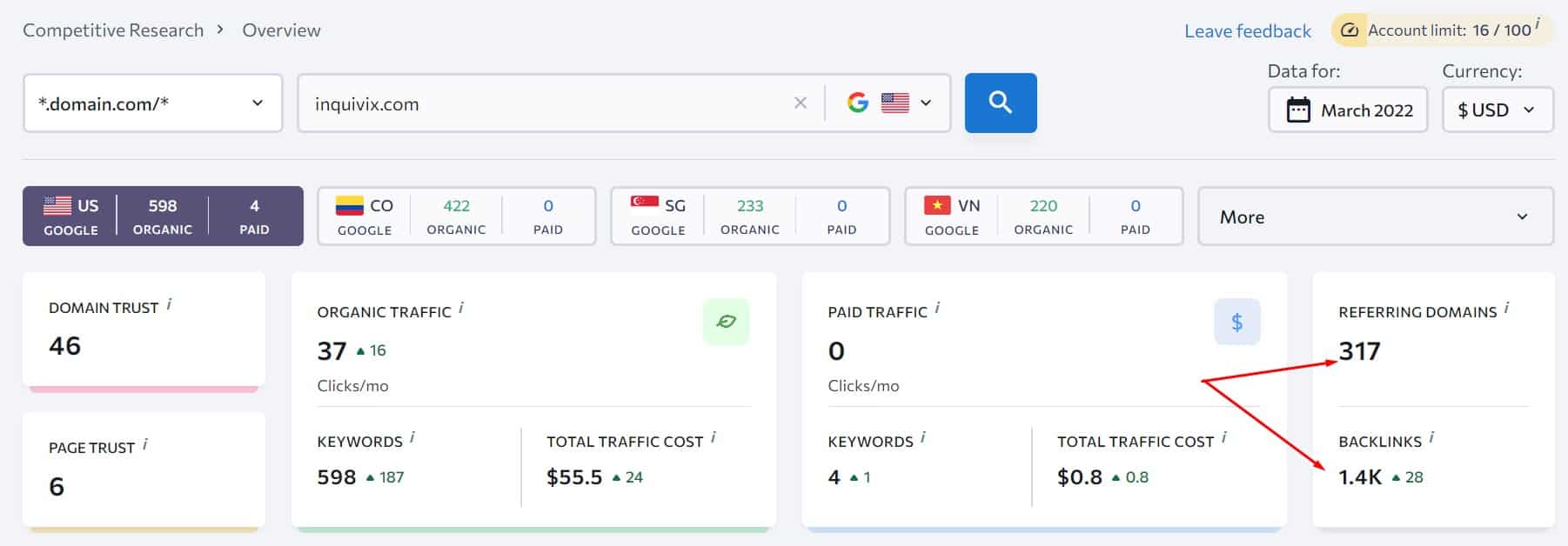
This will open the SE Ranking Backlink Checker report for the domain and I go to the “Backlinks” report.

Step #4: Find Backlinks Opportunities: Once I have the “Backlinks” report open, then I can start searching for backlinks opportunities.

Now, just scrolling through the list is not as efficient, that’s why knowing what kind of backlinks I am searching for will help me narrow down the list. In the example, I am searching for resource link building, so I can use the filter to narrow down my search.
For resource link building, there are common words used in URL that indicate if it is a resource page. The common trail of words are:
- Best:g., Best blogs, best agencies, best this, best that…
- Resource:g., Marketing resources, industry resources, etc.
- Links:g., Helpful links, links to learning more, etc.
So, let’s use one of these words in the URL filter and hit “Apply Filters”.

And now I only have to scan the list to find any relevant sites where I could include my website as one of the resources.
For example, if I am providing digital marketing services in Korea, then this would be a perfect page to try to land my website there. Or if I am having a Facebook group for digital marketers, then that’ another resource page where I can try to get my website included.
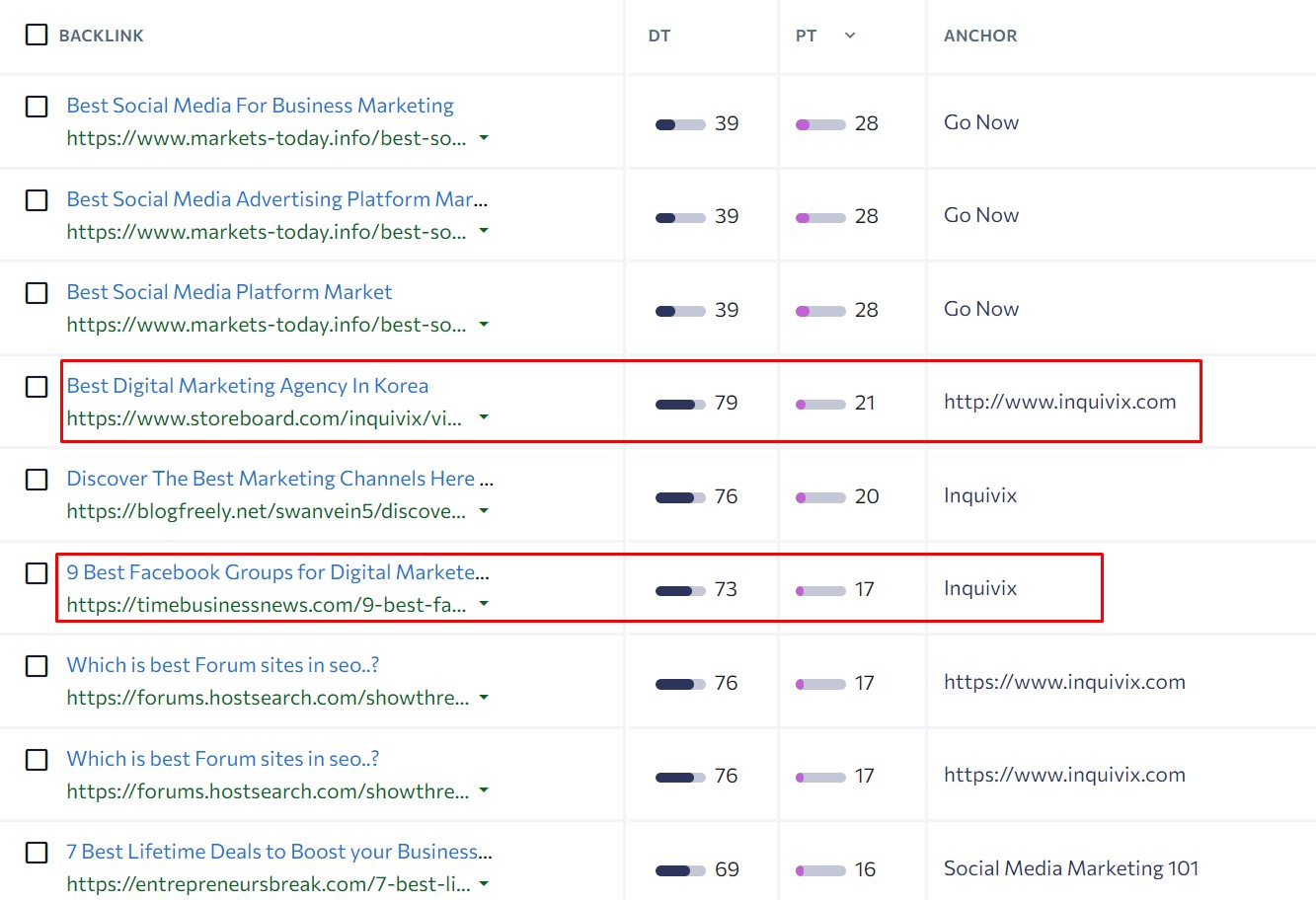
So, as you can see, right in the beginning I found two backlinks opportunities. So, like this, I will scan the list to find even more and do this with more competitors to create a long list of backlinks opportunities because backlinks benefits and link building benefits are enormous.
Again remember, that searching for backlinks is like looking for a needle in a haystack. Unless you know what you are looking for, it will be very difficult to find any backlink opportunities.
That’s why knowing what you are looking for will help you to utilize the right tools to ease the search as in this example.
Or you have a trained eye. Once you have done plenty of link building, then you will be able to just go through the backlink profile of the analyzed website and quickly find any link building opportunities.
Additionally, I also recommend you learn how to monitor and track backlinks to ensure you preserve them as long as possible.
5 Best Backlink Checker Tools
There are a lot of Backlink Checker tools that you can choose from. Some are more suitable for bloggers and some are better for large marketing agencies.
So let me share with you my five recommended Backlink checker tools:
- SE Ranking: The most affordable SEO tool for bloggers, website owners, marketing agencies, and business owners. By far the best value for money.
- SEMrush: The most comprehensive online marketing tool in marketing for anybody who wants every tool for every online marketing task.
- LinkMiner: Best alternative Backlink Checker tools with a powerful link database and affordable pricing.
- Ubersuggest: The most affordable SEO tool in marketing provided by SEO expert Neil Patel. Also check out Ubersuggest alternatives
- Majestic SEO: The oldest backlink checker tool on this list with a large database of backlinks.
Conclusion:
And there you go; now you know how to find backlinks to pages and webpage and also how to find backlinks opportunities to grow your website ranking and organic traffic.
I hope you have learned something new. If you have any comments, please come to my YouTube Channel, subscribe, and drop your comment in the comment section. I am glad to hear from you.
Related Articles:
- Keyword Research for SEO: 6 Steps Guide for Beginners to Boost Ranking
- How to Find profitable Keywords for Your Website?
- Semantic SEO: Ultimate Guide (2023)
- Ultimate On-Page SEO Guide for Non-SEOs to Boost Organic Traffic & Ranking
- White Hat SEO: Best Techniques & Tactics in Step-by-Step Guide
- Off-Page SEO Activity List: Increase Online Reputation
Also, check out our SEO hub page to find all our SEO resources.
Disclaimer
This article was created by Eduard Dziak and may contain affiliate links. The following were used to optimize the article for the best user and search engine experience include:
- SE Ranking for keyword research and on-page SEO optimization
- Surfer SEO for SEO-friendly content creation for users and search engines.
- Jasper AI for grammar correction and information enhancement.
The article is based on the author’s own experience and knowledge, drawn from both their own work and that of their clients, to provide the latest, proven methods.








